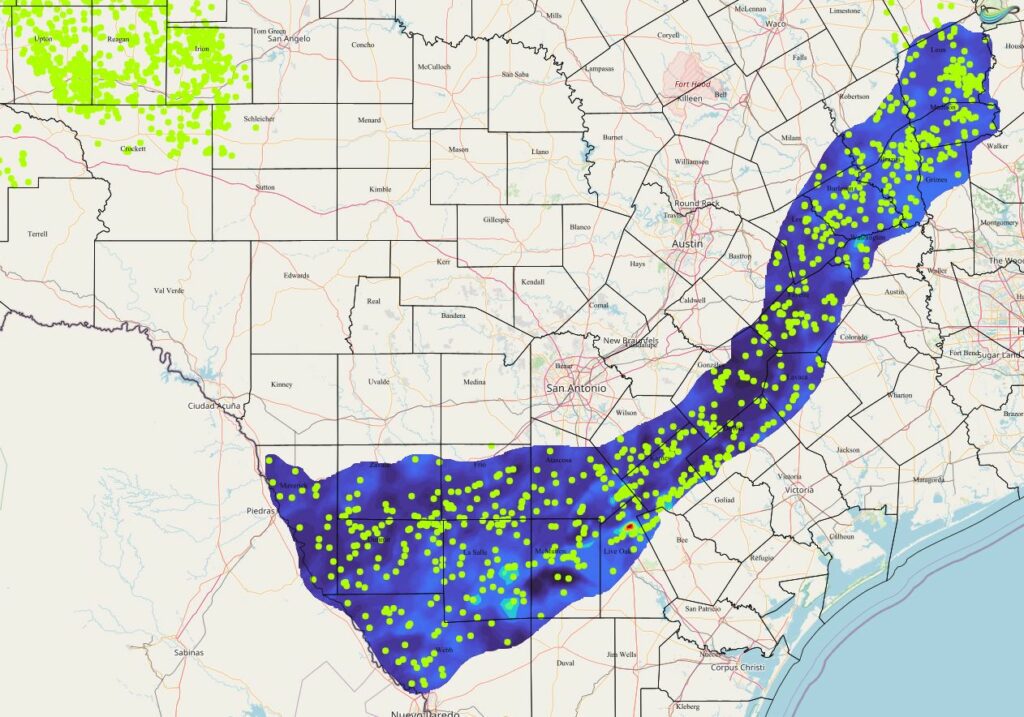Eagle Ford Trend Regional Shale Study
Analysis of 930 wells across a 300-mile stretch from the US-Mexican border to the Bryan-College Station area
The Eagle Ford Formation is a complex stratigraphic sequence.
This study provides insight into the connectivity of textural attributes of the wells.

The study wells represent a portion of our experience in this area. View our Interactive Map to see just how many wells we have analyzed.
Deposited during the Late Cretaceous over a widespread area of the Gulf Coast Mesozoic Basin, the Eagle Ford is situated between the underlying Lower Cretaceous carbonates and the overlying Austin Chalk sequence (oftentimes separated by unconformities). This project focuses on the 300 mile long fairway that spans from the USA-Mexico border to just past the Bryan-College Station area. In a dip sense, it extends from the section’s updip stratigraphic pinchout to positions downdip of the Cretaceous shelf edge. Across this trend, the Eagle Ford is a heterogeneous carbonate mudstone sequence that spans a series of low energy transgressive and regressive events as well as a varying degree of anoxia, lithologic composition, thermal history, overall gross thickness, geopressure and related reservoir quality. The understanding of these variations is critical in the understanding of the optimum conditions for both reservoir quality as well as fracture stimulation compatibility.
This study provides a petrophysical and geological analysis of 930 Eagle Ford wells that allows insight into the connectivity of textural attributes of the wells with NULOOK Shale Vision and NUVIEW 3D Reservoir Vision. Also available to coincide with the study is a GeoTextural rock properties log that depicts the brittleness of the formation.

purchase the full study or request your own
deliverables
Reservoir potential evaluation
NULOOK® Shale Analysis
- 930 wells
NUSTIM® Geomechanical Analysis
- 930 wells
NUVIEW® 2D Attribute Mapping
- Formation Parameters
- Stratigraphic Cross Sections
- 3D Petrophysical Property Distribution Model
- Stratigraphic Cross Sections
- Composite Stratigraphic Image Maps
- Reports

